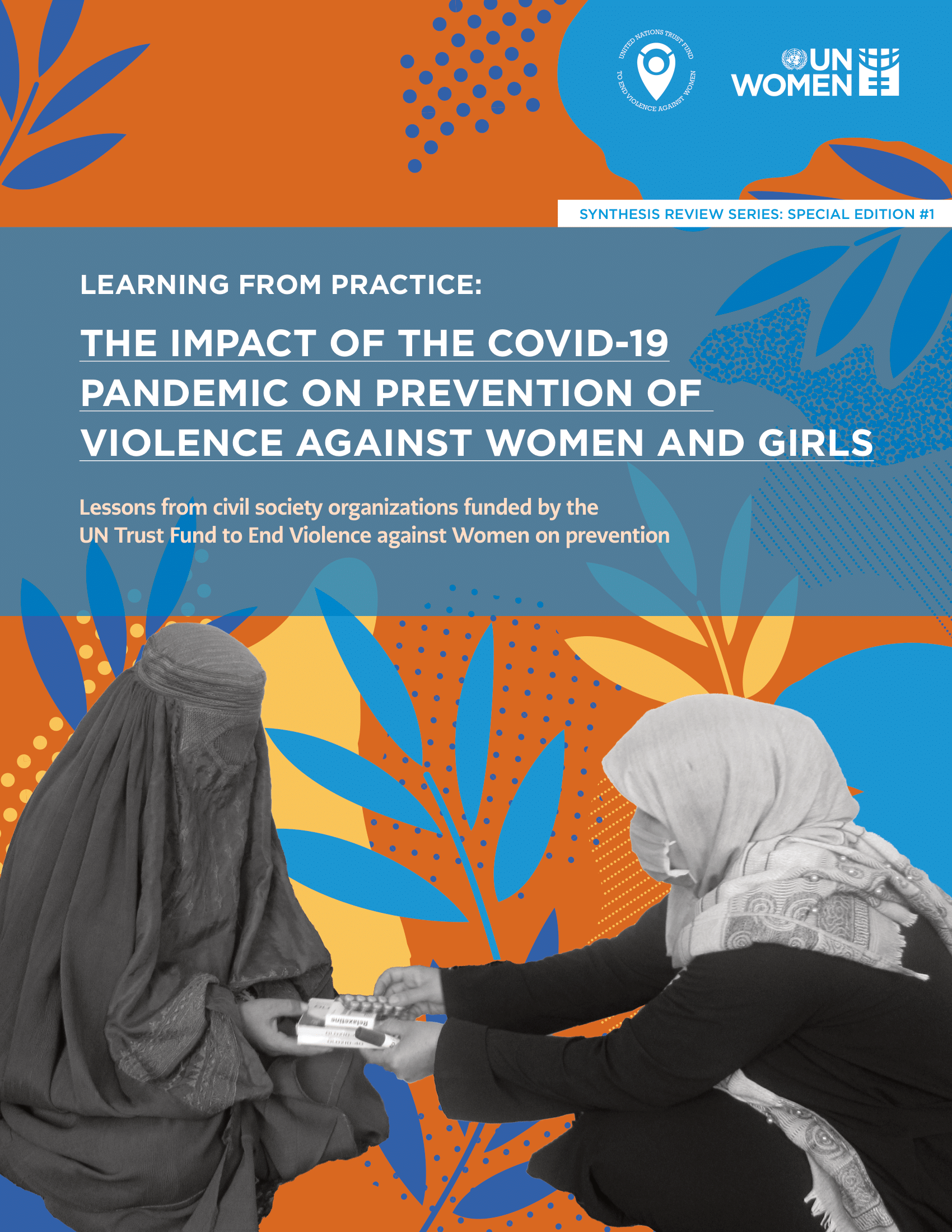
Learning from practice: The impact of the COVID-19 pandemic on prevention of violence against women and girls.

The COVID-19 pandemic and in some contexts the response to it has continued to make women and girls across the world increasingly vulnerable to various forms of violence, not only in the household but also at work and in public spaces. The pandemic has also threatened access to services for survivors of violence. Some of those requiring services now more than ever have faced new barriers, creating a culture of impunity. However, despite the surge in research and practice at this intersection, there remains a lack of context-specific published research and documentation on how the COVID-19 pandemic has affected VAWG prevention work specifically and how such work can be adapted.
This synthesis review draws on the experiences and practice-based knowledge of civil society organizations (CSOs), especially women’s rights organizations (WROs) supported by the United Nations Trust Fund to End Violence against Women (UN Trust Fund), to document the impact on and adaptations to prevention programmes during the COVID-19 pandemic across the world. Drawing on the experiences of 20+ civil society organizations in different countries and territories, the review finds that four key themes emerged from practitioner learnings on: a) the impact on the COVID-19 pandemic on working with women and girls for VAWG prevention, b) the impact on mobilizing communities for VAWG prevention during the COVID-19 pandemic, c) mobilizing legal systems and essential services for VAWG prevention during the COVID-19 pandemic and d) building organizational resilience and adapting prevention programming during the COVID-19 pandemic.
These findings are discussed in the synthesis review in conversation with the evidence base. The synthesis review also provides practical tips and recommendations for those leveraging working on prevention of violence against women and girls during the COVID-19 pandemic, i.e. for practitioners, researchers and for donors.
This review is part of a Prevention Series.